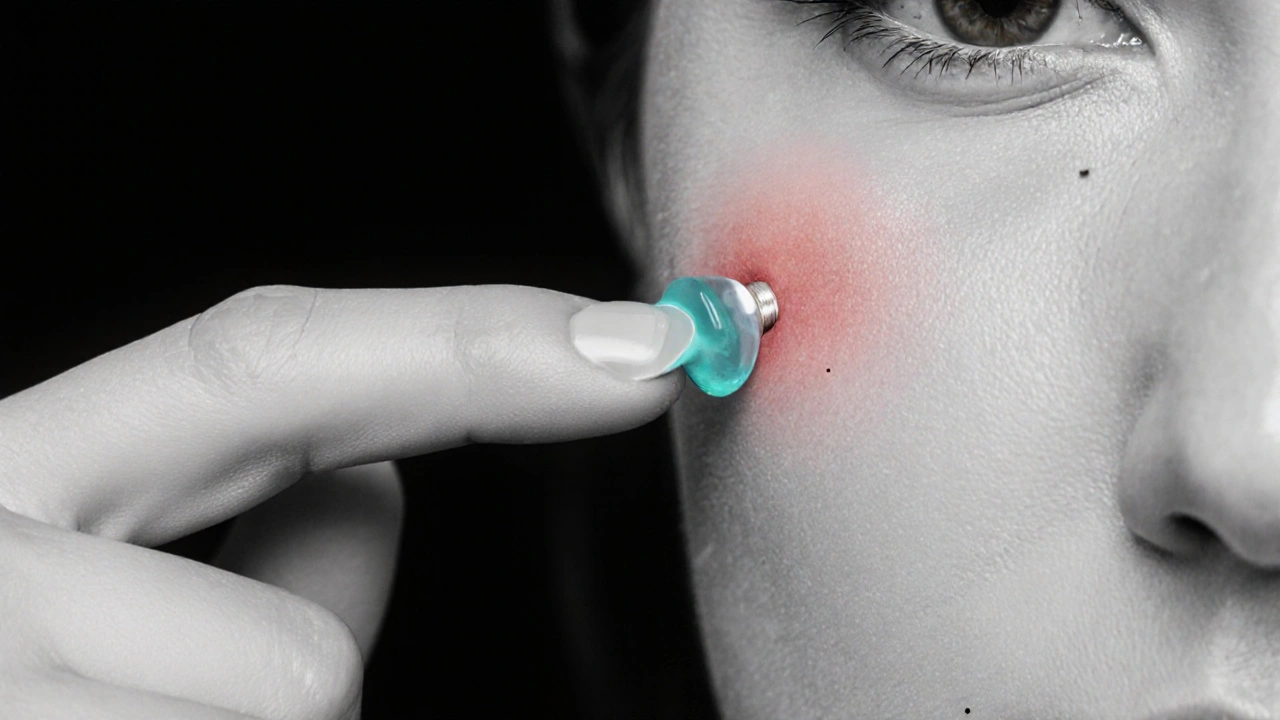benzoyl peroxide: guide to uses, safety & alternatives
When working with benzoyl peroxide, a peroxide compound that releases oxygen to kill skin bacteria and exfoliate pores. Also known as BP, it is widely used as a first‑line topical treatment for acne because it reduces the population of Propionibacterium acnes and clears clogged follicles. The core attribute of benzoyl peroxide is its rapid oxidative action, which makes it effective within days of consistent use. This simple chemistry underpins its role in dermatology and over‑the‑counter skin‑care products.
How it fits into acne management
acne vulgaris, a common inflammatory skin condition affecting teens and adults thrives on excess oil, dead skin cells, and bacterial growth. Benzoyl peroxide targets two of those factors: it kills the bacteria and helps shed the outer skin layer, preventing pore blockage. Studies show that a 2.5% to 5% concentration applied once or twice daily reduces lesion count by up to 50% in six weeks. Its strength lies in being both antimicrobial and keratolytic, which means it speeds up skin turnover without needing a prescription in many cases. Users typically start with the lowest concentration to gauge tolerance, then adjust based on response.
topical antibiotic, medications such as clindamycin or erythromycin applied to the skin are often paired with benzoyl peroxide to boost effectiveness and curb antibiotic resistance. The combination works because benzoyl peroxide kills bacteria that might otherwise develop resistance to the antibiotic, while the antibiotic reduces inflammation. Clinical guidelines recommend applying the antibiotic and the peroxide at separate times—often morning and evening—to minimise irritation. When used correctly, patients report faster clearing of papules and lower rates of rebound flare‑ups after treatment ends.
retinoid, a vitamin A‑derived compound that normalises skin cell growth such as adapalene or tretinoin offers a different mechanism: it prevents new comedones from forming by speeding up cell turnover. Pairing a retinoid with benzoyl peroxide can be powerful, but the skin may need a gradual introduction to avoid excessive dryness or redness. A typical protocol starts with benzoyl peroxide on alternate nights, adding the retinoid after two weeks if the skin tolerates the peroxide well. This staged approach leverages the antimicrobial power of peroxide while harnessing the comedolytic action of retinoids, delivering a comprehensive acne regimen.
Beyond acne, benzoyl peroxide appears in washes, gels, creams, and spot‑treatment formulas, each delivering the same oxidative punch in a format that fits different lifestyles. Safety considerations include avoiding excessive sun exposure, because the peroxide can increase photosensitivity; using a gentle cleanser; and applying a non‑comedogenic moisturizer to offset dryness. Pregnant or nursing individuals should consult a clinician before starting, though most sources deem low‑concentration peroxide safe when used as directed. Interaction checks are simple: avoid using strong acids (like salicylic acid) in the same routine, as they can amplify irritation. Monitoring skin response for the first two weeks helps tailor the concentration—most people settle on a 2.5% gel that balances efficacy and comfort.
Armed with this overview, you can pick the right benzoyl peroxide product, decide whether to combine it with antibiotics or retinoids, and manage side effects proactively. Below you’ll find a curated set of articles that dive deeper into dosage tips, pregnancy guidance, alternative acne therapies, and how to integrate benzoyl peroxide into a broader skin‑health plan.
Benzoyl Peroxide for Sensitive Skin: How to Cut Irritation
- Laura Ledas
- Aug, 13 2025
Learn how to use benzoyl peroxide on sensitive skin without the burn. Get concentration tips, patch‑test steps, soothing moisturizers, and when to see a dermatologist.
Learn More